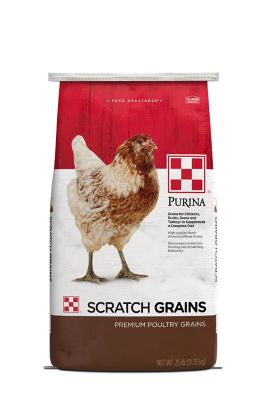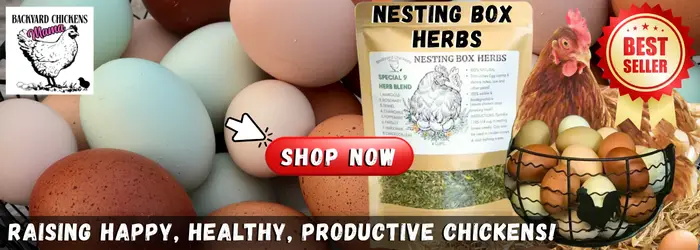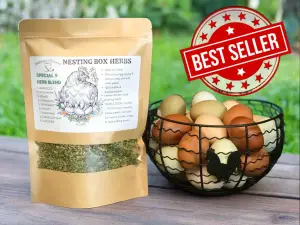
There are several important things you need to know about chicken scratch before feeding it to your flock. Knowing when and how it is best served and the recommended quantity to give your chickens can ensure the greatest for the health and well being of your chickens.
- 1. What is Chicken Scratch?
- 2. Why is it Called Chicken Scratch?
- 3. Is Chicken Scratch Good for Chickens?
- 4. At What Age Can Chickens Eat Scratch?
- 5. Can You Give Chickens Scratch in Summer?
- 6. When is the Best Time to Feed Scratch Grains to Chickens?
- 7. Is it OK to Feed Only Scratch Grains to Chickens?
- 8. What is the Difference Between Layers Feed and Scratch?
- 9. How do You Feed Scratch Grains to Chickens?
- 10. What is the Nutritional Content of Chicken Scratch?
- 11. Homemade Chicken Scratch Recipe
- CONCLUSION: 11 Important things You Need to Know About Chicken Scratch
1. What is Chicken Scratch?
Chicken scratch is a feed that consists of various types of grains and seeds all mixed together. It is a high carb and fat treat that can be scattered outside so chickens can peck and scratch the ground to eat. Common ingredients include wheat, barley, cracked corn and oats.
Common Chicken Scratch Ingredients
| COMMON CHICKEN SCRATCH INGREDIENTS |
|---|
| WHEAT |
| BARLEY |
| CRACKED CORN |
| OATS |
| MILO |
| MILLET |
| BLACK OILED SUNFLOWER SEEDS |
| SPLIT PEAS |
2. Why is it Called Chicken Scratch?
This treat is called chicken scratch because chickens peck and “scratch” the ground with their feet in order to scratch it up from the ground to eat it.
Chickens instinctively know to peck and scratch the ground to search for food. Chicks as young as one day old can be seen doing this.
Handwriting that is illegible is also frequently called “chicken scratch” because it is similar to the markings that chickens make when scratching the ground.
3. Is Chicken Scratch Good for Chickens?
Because chicken scratch is high in fat and carbohydrates, it makes a great TREAT to give chickens. Treats of any kind should not exceed 10% of a chicken’s diet.
Because scratch is high in fat and carbs, it is especially good to give to chickens on cool winter evenings before they go to roost for the night.
Feeding chickens scratch in the evening fills them up, making their body work hard throughout the night to digest the high fat and carb contents. This “work” generates body heat, warming the chicken up.
Some choose not to give their chickens scratch during the warm summer months because of the slight increase in body heat it produces during digestion.
4. At What Age Can Chickens Eat Scratch?

Some chicken enthusiasts will tell you to wait to give chicks any treats until they are 18 weeks old, others will tell you 12 weeks and still others 6 or 8 weeks. So what is it?
It is safe to give a chick scratch at any age as long as a few guidelines are met.
- Chicks do not need to eat scratch, but most chicken owners enjoy giving their chicks a treat. If you would like to feed them a little scratch, make sure you offer their regular feed first.
- Chicks growing up in the wild scavenge for seeds and grains and do just fine. As long as you offer a chick its nutritionally balanced food first and the treats do not exceed 10% of their diet, they should do just fine.
- Also, if you offer your chicks scratch, you should also offer them grit. Grit are little tiny pebbles that help to break down the scratch.
- Chicks that are allowed to free range and have access to tiny pebbles in the dirt do not need to be offered grit.
- Feed stores sell “chick scratch,” which is broken up pieces of “hen scratch.” Offer your chicks this instead. It is much easier for baby chicks to eat and digest. It is also safe for your adult chickens to eat too.
| GUIDELINES FOR OFFERING CHICK GRIT |
|---|
| OFFER NUTRITIONALLY BALANCED CHICK FEED FIRST |
| CHICK SCRATCH (TREATS) SHOULD NOT CONSIST OF MORE THAN 10% OF A CHICKS DAILY DIET |
| IF CHICK DOESN’T FREE RANGE, THEN OFFER GRIT TOO |
| SERVE “CHICK SCRATCH,” NOT “HEN SCRATCH” |
5. Can You Give Chickens Scratch in Summer?
Chicken scratch can be fed to chickens anytime of year, but it is thought to be more beneficial for chickens during the cooler months.
Scratch is high in fats and carbohydrates, making the body have to work to digest the food. If you choose to give your flock scratch during the summer, consider offering it in the earlier in the day.
Even better yet, in the warm summer weather, offer your chickens garden weeds, leafy greens from your salads and grass clippings from your yard.
Consider growing some herbs for your chicken to enjoy during the hot summer months. Mint is a great herb to grow and most chickens love it. It not only has cooling benefits, but it also helps to deter flies and rodents!
6. When is the Best Time to Feed Scratch Grains to Chickens?
The best time to feed scratch grains to chickens is in the late afternoon or early evening when it is cold outside. By filling up your chickens crops late in the evening, it makes their body work hard to digest. This “work” causes a slight increase in a chickens body temperature, helping to warm them up on a cool winter night!
And of course, make sure you feed your chickens their regular feed first before offering treats. They are just like kids. They love their treats and will choose treats over the nutritionally balanced food, but it is not good for them to do this all the time.
7. Is it OK to Feed Only Scratch Grains to Chickens?
It is not ok to feed only scratch grains to chickens. Scratch is very high in fat and carbohydrates and does not offer a nutritionally balanced diet for chickens. Think of scratch as a dessert.
You always eat a balanced meal first and if you do have dessert, it is after your nutritionally balanced meal. Chickens are the same way.
You will have a healthier chicken if you feed them treats, such as scratch, only on occasion and also in moderation.
8. What is the Difference Between Layers Feed and Scratch?

Layers feed is a nutritionally balanced feed that all hens should be eating when they begin to lay eggs. It comes in 3 forms: layers pellets, layers crumbles and mash. Most hens begin laying eggs between 16-20 weeks of age.
Laying hens require increased protein and calcium to keep up with egg laying. Egg laying can quickly deplete a hen of energy. A good layers feed will provide between 16%-20% protein and increased calcium.
You will know if a hen needs additional calcium in her diet if she starts laying eggs with soft shells. A good layers feed offers increase calcium, enough to replenish the calcium lost with egg laying.
An adult laying hen needs around 4 grams of calcium each day. In order to make sure your hens get enough daily calcium, offer a little bit of oyster shell in a separate container for them. Hens will only eat as much as their body needs.
Other ingredients in a really good quality layers feed are Omega 3’s for more nutritious eggs and both pre on probiotics to boost a hens immunity levels.
9. How do You Feed Scratch Grains to Chickens?
Scratch grains is best given by scattering it across the yard or chicken run where chickens can peck and scratch the ground looking for it.
You can grab a handful and offer it to them directly from your hand or throw it out in the yard for them. I always like to have them eat a little out of my hand to get them more used to getting close to me.
If you have quite a few chickens in your flock, you can use a scoop and scatter it around the yard. I like to scatter it in several areas so the chickens can break up into smaller groups scavenging and “scratching” for their food.
Another way you can offer them scratch grains is by fermenting it first. This can be done by soaking the grains in water for a couple days. This unlocks so many more nutrients and is easier to digest.
And one more way you can feed scratch to your chicks is by making fodder out of it. This allows the grains to sprout, unlocking a whole lot of nutrients that they couldn’t get with regular scratch grains. It is also much easier to digest.
10. What is the Nutritional Content of Chicken Scratch?
A typical chicken scratch consists of approximately 8%-9% protein, 3% fat and 4% fiber. This can vary slightly, depending upon the included seeds and grains.
Scratch is not very nutritional for chickens and is best to only be fed as a treat. Think of it as candy for your chickens. Too much of it and it can lead to a fat, unhealthy chicken.
Offer regular feed first and then treats, such as scratch, can be given. Only give what they can finish within 10-15 minutes.

Purina Sunfresh Scratch Grains, 25 lb. [More]
11. Homemade Chicken Scratch Recipe
A typical chicken scratch contains cracked corn, wheat, oats and barley. I like to add a few other ingredients to boost the nutritional contents in it.
Add equal parts of the following ingredients and the general rule of thumb is to only serve enough for your chickens to consume within 10-15 minutes.
| HOMEMADE CHICKEN SCRATCH: ADD EQUAL PARTS OF EACH |
|---|
| CRACKED CORN |
| WHEAT |
| OATS |
| BARLEY |
| BLACK OILED SUNFLOWER SEEDS (B.O.S.S.) |
| SPLIT PEAS |
| PUMPKIN SEEDS |
| MILO |
| MILLET |
| DRIED CRANBERRIES OR RAISINS |
CONCLUSION: 11 Important things You Need to Know About Chicken Scratch
- Chicken scratch is a fun treat that can be fed to your chickens, but should only be given in moderation. It’s kind of like “candy” for chickens.
- They will love it and choose it over their main food. This is why it is best offered after their main food.
- Only scatter as much scratch on the ground as they can finish in about 10 minutes or no more than 10% of their daily diet.
- It’s ok to give “chick scratch” to chicks still in a brooder, as long as you also offer some grit to help aid in the digestion of it.
- The best time to offer scratch to your flock is on cool winter evenings. It not only will fill their bellies before going to roost at night, but it will help to warm their bodies as it works to digest the high fat and carbohydrate contents of the chicken scratch!
11 Important Things You Need to Know About Chicken Scratch– https://www.backyardchickensmama.com/important-things-you-need-to-know-about-chicken-scratch/









